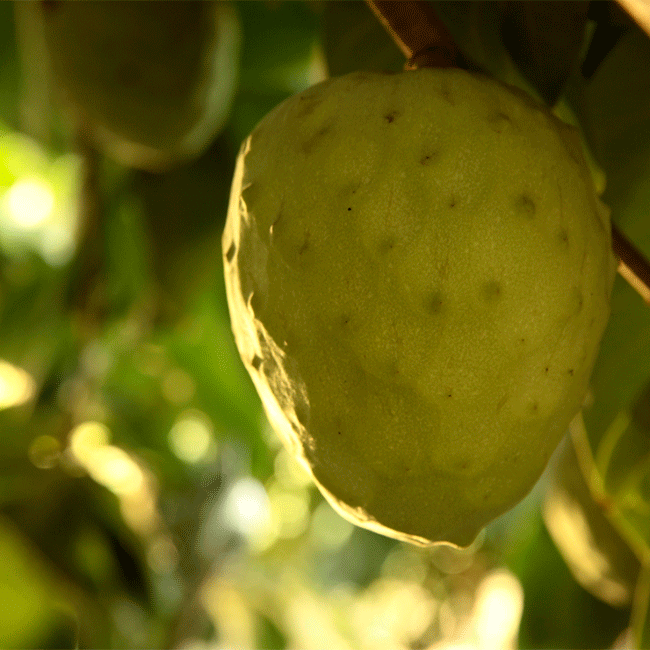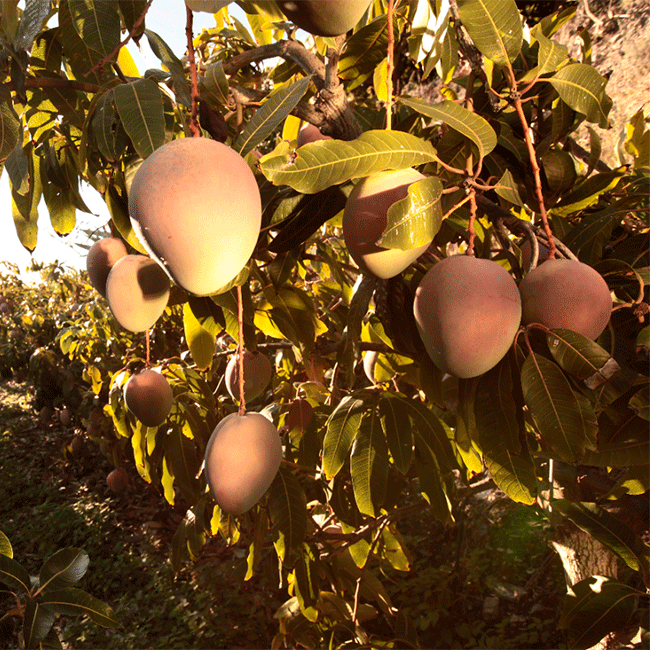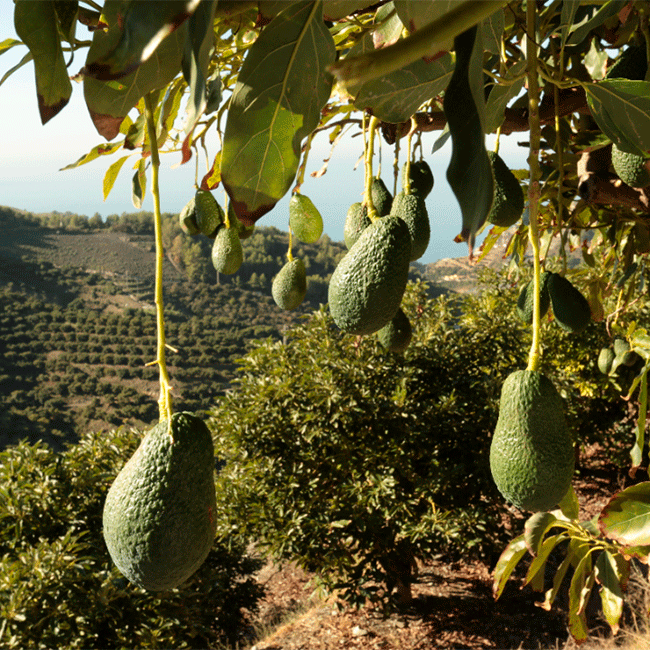.png.transform/rendition-xs/image_image%20(1).png)
Exotic Fruits, A Sweet Spanish Treasure
Mango, papaya, cherimoya and avocado, four exotic Spanish fruits that are conquering European markets. Their competitive advantages: their flavor, sweetness, perfect ripeness and the logistics and exporting experience of Spanish companies.
When travelers cross the steep Penibaetic System by car heading to the coast of Granada, they can't imagine what they're find when they pass the highest mountain tops and begin their southward descent. They'll quickly note a change in both the climate and landscape. They'll leave behind the harsh continental climate and the Sierra Nevada Mountains and gradually enter a dense torrent of vegetation that leads to the sea.
We're now in the Verde River Valley, very close to Almuñecar and to the gleaming Mediterranean Sea. This green leafy area, which is visible from the road, can be attributable to just one thing: the cherimoya, one of the first tropical fruit trees to reach the Iberian Peninsula and, for many, the driver of an agricultural revolution that has made Spain the main European producer of tropical fruits and one of the leading players in the sector on a global level.
Although the avocado, cherimoya, papaya and mango originally come from far away places, these fruits can also be found in certain parts of Spain with soil and weather conditions that are ideal for their growth. This, together with Spain's logistical and transport abilities, has made us a privileged supplier of these delicious, healthy fruits for our European neighbors.
In the case of tropical varieties (primarily avocado, persimmon, and mango), there is a notable increase in sales from exports. According to FEPEX, this figure has increased in six years, from around 300 million euros to around 600 million. The avocado has tripled its export value, from 100 to 300 million euros, while doubling in volume. It's a trendy fruit with extensive gastronomic possibilities and a healthy nutritional profile. Mango sales have also grown rapidly, from around 30 million in 2012 to 75 million in 2017.
Cherimoya from Spain, tropical sweetness

The Spanish cherimoya is harvested in September-October and has a short sales period of barely three months; as a result, it's important to determine the right time to harvest them to ensure that they can be transported quickly to European markets. This, which may seem like a setback from a commercial standpoint, is viewed as an advantage by sector companies and the PDO Chirimoya de la Costa Tropical de Granada-Málaga's Regulatory Council: consumers know that it's a super fresh and seasonal product that doesn't last for more than 10 days in cooling chambers and that they should be eaten as soon as we see them in fruit shops. Why wait?
In the middle of the Verde River Valley is the first cherimoya farm in Spain and home to the main native variety of cherimoya, Fino de Jete. This variety accounts for 95% of Spain's production, followed by Campas, Piña and Negrito. Fino de Jete cherimoyas are generally smaller fruits with less water content, with the result that they have a higher concentration of sugars. This is a variety with a more intense flavor compared with other higher caliber cherimoyas grown in other parts of the world.
Mango and papaya from Spain, juicy treats

Spanish mango is in a similar situation as the cherimoya. Its natural markets are Spain and Europe, so the fruits are harvested when they are perfectly ripe and, in less than 48 hours, they're available throughout Europe, compared with the three weeks on a boat that companies from South America need for their products to reach the same destination.
Spanish mango's competitive advantage is actually an advantage for consumers: they're able to eat mangos that reach stores covered in natural wax (this is the fruit's own secretion, providing a natural layer of protection), without being washed or treated with varnishes or fungicides.
Once the mangos are collected one by one from the tree, the stems are cut off on the spot and they are carefully placed upright so that the sap can escape and ensure that it doesn't burn their velvety skin. This is how mangos are harvested by farmers in the Vélez-Málaga area, where the Agricultural Transformation Society (TROPS), Spain's leader mango seller, is based. The group comprises two thousand farmers, who produce 50% of the 30,000 tons of mangos harvested annually in Spain, where the Osteen variety is the true standout. TROPS is responsible for the bulk of the mangos that head to France, the UK and Germany, packed in small boxes on blue cellophane paper, which further intensifies the bright purple color preserved by the natural wax on their skin.
When it comes to papayas, we're going to have to travel to the Canary Islands and Murcia. The Islands were the first place that papayas were grown in Europe, and the first farms were on Tenerife. The papayas served in the many hotel complexes on the island, where tourists can enjoy a delicious tropical, Canary flavor, come from those farms.
Mazarrón, a town very close to the Mediterranean coast in Murcia, is home to one of the companies most committed to papaya farming in recent years. Grupo Durán, which developed a plan in just two years to grow this tropical fruit in greenhouses, has obtained production of 400,000 kilos per year and a growing area of 20 hectares, a figure it expects to double in the near future.
Avocados from Spain, all the rage

If there's a tropical fruit that has exceeded forecasts in the last decade and truly led a foodie revolution, indubitably it's the avocado. It has become almost a cult favorite in haute cuisine and also in home cooking, supported by positive messages about its nutritional wealth in the media, blogs and social media.
Thanks to its climate, Spain has jumped on the bandwagon when it comes to growing this fruit. According to data from the 2018-2018 harvest presented by ASAJA-Andalucía, Spain grew 61,000 tons of avocado, almost 20% more than during the previous season, yielding revenues of 125 million euros. Málaga province is home to 70% of production. Hass is the main variety, followed some distance by the green-skin avocado.
Text: Rodrigo García Fernández
Translation: Samara Kamenecka

